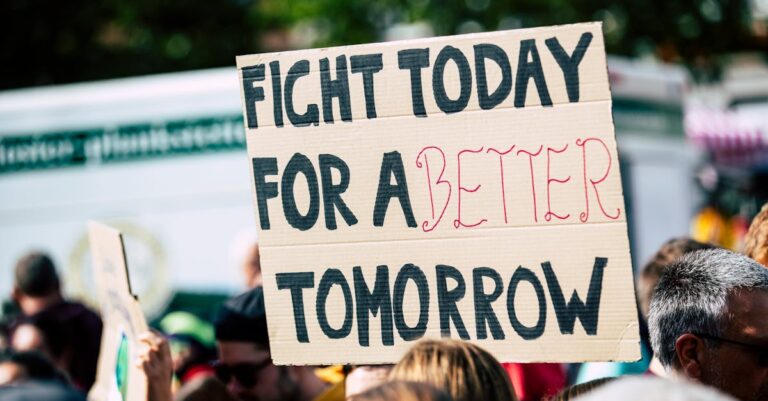
As communities across America grapple with the recent wave of teacher walkouts, the impact on schools and students has been significant. These unwieldy events, characterized by educators protesting for better pay, working conditions, and resources, have sparked a nationwide conversation about the state of education in the country.
The stories emerging from these teacher walkouts paint a vivid picture of the challenges faced by those on the front lines of education. From overcrowded classrooms to outdated textbooks, teachers are often forced to navigate a system that is stretched to its limits. In many cases, these dedicated educators are not only fighting for their own rights but also advocating for the well-being of their students.
While the focus has primarily been on domestic issues, it is important to recognize that teacher walkouts have international implications as well. As America strives to maintain its competitive edge in the global economy, the quality of education provided to its youth is paramount. When teachers are unable to perform their jobs effectively due to inadequate resources and support, the consequences can be far-reaching.
Moreover, the impact of teacher walkouts extends beyond the walls of the classroom and into the fabric of society. Students who are not receiving a quality education are at a disadvantage as they enter the workforce, potentially perpetuating cycles of poverty and inequality. By supporting teachers in their calls for reform, communities can work towards creating a more equitable and prosperous future for all.
As we navigate these turbulent times in education, it is crucial to listen to the stories of those most affected by teacher walkouts. By understanding the challenges faced by educators and students alike, we can work towards creating a brighter future for our schools and communities.









teacher walkout r bad for students. they need good edumacation for good futures. if teachers don’t get paid good and have good stuff in schools, students suffer. we need to support them so everyone can have equal chances in life
oh man, like it’s so so so sad to think about teachers having to like protest for better pay
Wow, these teacher walkouts got me thinking – maybe I should’ve become a teacher for better pay too! But seriously, it’s so important to support our educators because they’re shaping the future generation, ya know? Let’s give them the resources they need so our kids can be super smart and run the world someday! 🌟
Hey y’all! Just wanted to drop a comment here about the whole teacher walkouts situation. It’s crazy how our educators are out there fighting for better pay and resources, right? I mean, our kids deserve the best education possible, and it’s up to us to support our teachers so they can give their all in the classroom. Let’s all work together to create a brighter future for our schools and communities. Also, that photo by Max Fischer is pretty cool, huh? Keep up the good work, everyone!
wow teachers are so so important and deserve way more pay and support for all the hard work they do with the students and dealing with all the troubles in the education system! it’s like a big cycle you know, teachers need resources to teach kids, kids need teachers to learn, and everyone needs a
Wow! This is a huge deal, man. Like, teachers are out here
Ya know, teachers do so much for us, they deserve beter pay and conditions. Education is so important for everyone’s future, we gotta support them! Also, check out this cool photo by Max Fischer on Pexels, it’s really neat!
Wow, because we all know that teachers just LOVE walking out of classrooms and disrupting everyone’s day for fun, right? I mean, who needs fair pay and resources when you can just struggle in silence, am I right?
Wow, these teacher walkouts are like a big deal, you know? Teachers need more money and better stuff to teach the kids right. It’s not just about them, it’s about the students too. Education is super important
teecher walkout make me so sad 😢 shuld be payd more cuz they do so much for
teecher walkouts shud be like wake up call for all of us! they are standin’ up for beter pay and conditions but it’s not just about them, it’s bout the kids too. if we want a strong country, we gotta have strong schools and that starts with supportin’ our teachers. they are the ones shapin’ the future leaders of tomorrow so we gotta
I think it’s really important to listen to the voices of the teachers and students who are really affected by these walkouts. Education is super crucial and if our teachers aren’t getting what they need, then how can we expect our students to thrive, you know? It’s like a domino effect or something. And hey, it’s not just about America, this stuff has global consequences too! We gotta make
WOW, this is such an important topic! Teachers deserve so much more, they work so hard and sometimes they don’t get enough credit. Education is super important for the future, like, without good teachers, how can we expect our kids to succeed? We need
Wow, teachers protesting for better pay and resources? How dare they want to be treated like human beings! I mean, who needs well-paid educators with updated textbooks when we can just keep perpetuating cycles of poverty and inequality, am I right? Let’s just ignore the international implications and continue to sweep our education system’s issues under the rug. Great plan, America!
TEACHER WALKOUTS MAKE ME SO MAD! LIKE HELLO, WHY CAN’T THEY JUST PAY TEACHERS MORE AND GIVE THEM WHAT THEY NEED?! OUR
Whoa, these teacher walkouts are super important, man. Like, for real, teachers need better pay and resources to help the kiddos learn better. If teachers ain’t happy, how can they teach us right, you know? And like, education is key for our future, not just in America but everywhere. We gotta support the
Wowzers, these teacher walkouts are really shaking things up, huh? It’s like a big pot of soup, stirring and bubbling with all these issues about pay and resources and stuff. Teachers are like superheroes, fighting for justice and better conditions not
Wow, these teachers be like, “Give us more money and less outdated textbooks, please!” Can you imagine trying to teach a class with a chalkboard from the 1800s? Yikes! But for real, education is super important for the future of our society and economy, so let’s support those teachers fighting the good
wow thats a really important topic because teachers are like super important for the future and stuff. we should all like listen to them and help them out because they care about the
Wow, these teacher walkouts are like a real-life drama series unfolding in schools across America! It’s like teachers are the superheroes fighting for justice in overcrowded classrooms and battling outdated textbooks. Maybe we should give them capes instead of chalk! But seriously, let’s support our educators so they can educate the next generation to
Wow, because we definitely need MORE stuff happening in 2021, right? Teacher walkouts, like, that’s exactly what we need to add to the mix. Who needs educated kids anyway, right? Let’s just
hey I think it’s really impotent to support our teachers coz they do a lot for us and our kids
Wow, can you imagine if teachers went on strike for better snacks in the break room instead of better pay?
Wow, because nothing says quality education like teachers having to protest
wOOoow, thiz iz sum seriuz stuff about them teacherz and the walkouts
Hey y’all,
Wow, this article really got me thinking about how important teachers are in shaping our future. I mean, they do so much for us and they deserve
Wow, because nothing says quality education like teachers walking out and disrupting the whole system, right?
These teacher walkouts got me thinking – maybe I should walk out of my job for better snacks in the break room! But seriously, big respect to the teachers fighting for what they
Wow, because who needs well-paid teachers with decent working conditions and up-to-date resources when we can just keep cutting education budgets, am I right? Let’s just keep churning out ill-equipped students who will struggle in the workforce, but hey, at least we saved a few bucks, right? Priorities, people,
Wow, I think teachers are super brave for standing up for what they deserve! Education is so important for everyone and teachers work super hard so they should get paid better and have the best stuff to teach with! It’s not just about the money, it’s about creating a better future for all the kids too! Let’s support our teachers and make sure they have everything they need to help us learn and grow
yeah, educators deserve better pay and resources for sure! it’s tough out there for teachers and us students feel the effects too. gotta support the peeps who are shaping
Ugh, these teacher walkouts are like soooo frustrating, you know? Like, teachers just want better pay and stuff, but they gotta deal with overcrowded classrooms and old textbooks. It’s like, how are students
Wow, these teacher walkouts are really making waves, huh? It’s like a domino effect, you know? When teachers are struggling, students feel it too. And it’s not just a local issue, it’s like a global wake-up call to prioritize education. Let’s support those teachers fighting for change – they’re the real MVPs here, trying to make
OMG, like, totally feel for these teachers, ya know? They’re like, out here fighting for better stuff for the kids and themselves, and it’s just, like, so important. Education is, like, super crucial for everyone, not just in America but,
oh man, it’s like a cycle of sadness that just keeps going with these teachers not getting what they need to help the students and then the students suffer and then society suffers too, it’s
Wow, because nothing says “education” like making teachers fight tooth and nail for decent pay and working conditions, right? I mean, who needs well-paid and supported educators to shape the minds of our future generations when we can just keep cutting corners and expecting miracles in the classroom, am I right? But hey, as long as we have some pretty pictures of teachers protesting, I guess everything will
Wow, these teacher walkouts are really somethin’. It’s important to think about how it’s affectin’ the schools and the students, ya know? Like, teachers just want fair pay and better workin’ conditions, they shouldn’t